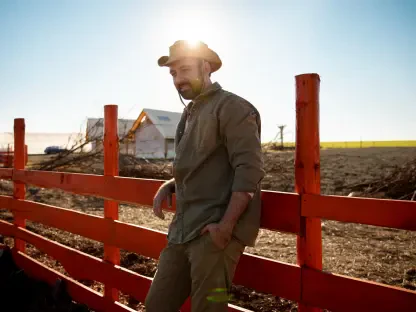Nestled in the heart of the Rocky Mountains, just over 90 miles west of Denver, a small town is making waves in the realm of urban technology with a groundbreaking approach to municipal management. Vail, Colorado, has embarked on an ambitious journey to transform itself into a smart city by harnessing the power of agentic artificial intelligence (AI). Through strategic partnerships with leading technology firms like Hewlett Packard Enterprise, NVIDIA, SHI International, and Kamiwaza AI, the town is integrating cutting-edge solutions to enhance government operations, elevate public safety, and improve the experience for both residents and visitors. This initiative marks a significant step forward in how smaller municipalities can leverage advanced tools to address modern challenges, setting a potential blueprint for others to follow. The rapid adoption of this AI-driven platform showcases not only technological innovation but also a commitment to efficiency and community well-being.
Revolutionizing Municipal Operations with AI
Streamlining Workflows Across Departments
In a remarkably short span, Vail has implemented an AI platform that is already reshaping the way town departments function, creating seamless integration and improved communication. The system connects disparate workflows, enabling real-time information sharing that eliminates redundancies and boosts operational efficiency. Town Manager Russell Forrest has emphasized the impressive return on investment seen within just a few months of deployment, a stark contrast to the traditional timelines of system overhauls that often stretch over a year. This rapid progress is largely attributed to the collaborative efforts with tech partners who have tailored solutions to fit Vail’s unique needs. By automating routine processes, the platform allows municipal staff to redirect their focus toward strategic initiatives such as policy planning and community outreach, fostering a more responsive local government. The impact is evident in streamlined daily operations, where tasks that once took hours can now be completed in minutes, paving the way for a more agile administration.
Enhancing Customer Service Through Automation
Beyond operational workflows, the AI system is transforming how Vail interacts with its community by prioritizing customer service and accessibility. One standout feature is the automation of compliance checks for municipal websites and public kiosks, ensuring adherence to the Americans with Disabilities Act (ADA) ahead of an upcoming deadline. The AI identifies issues like missing metadata in images and suggests actionable fixes for staff to review, significantly reducing manual workload. This not only ensures inclusivity for all users but also frees up employees to engage in more meaningful interactions with residents and visitors. Additionally, the technology optimizes resource allocation by handling repetitive inquiries and tasks, reducing the need for extra staffing despite growing demands. As a result, the town can maintain high service standards without straining budgets, demonstrating how intelligent automation can enhance the public experience while maintaining fiscal responsibility.
Addressing Urban Challenges with Smart Technology
Bolstering Public Safety with Wildfire Detection
Public safety remains a top priority in Colorado, where the threat of wildfires looms large due to changing climate patterns and increasing incidents. Vail’s agentic AI platform tackles this critical issue head-on with innovative tools designed for early detection and rapid response. AI-powered cameras strategically placed around the community can differentiate between smoke from fires and harmless fog, providing precise alerts to public safety officials. Beyond mere detection, the system offers actionable insights, such as estimating the resources needed—like the number of fire trucks—for an effective response. This capability could prove lifesaving in a region prone to such natural disasters, ensuring that emergencies are addressed with speed and accuracy. By integrating these advanced technologies, Vail is setting a new standard for how municipalities can protect their communities from environmental threats, potentially saving lives and property through proactive measures.
Optimizing Resources for Future Growth
Another pressing challenge for growing towns like Vail is managing resources amid expanding needs, a concern the AI platform addresses with remarkable foresight. By automating mundane tasks across departments, the system reduces the dependency on hiring additional full-time staff, even as workloads increase due to tourism and population growth. This approach not only controls operational costs but also allows existing employees to concentrate on high-value activities like community engagement and long-term planning. The technology’s scalability ensures it can adapt to future demands, offering a sustainable solution for municipal management. Furthermore, the insights provided by AI-driven analytics help town leaders make informed decisions about infrastructure investments and service expansions. This forward-thinking strategy positions Vail to handle growth efficiently, ensuring that public services remain robust without overextending limited resources, a model that could inspire other small towns facing similar pressures.
Reflecting on a Technological Milestone
Looking back, Vail’s adoption of an agentic AI platform marked a turning point in how smaller municipalities approached urban governance. The integration of this technology into critical areas like wildfire management, accessibility compliance, and operational efficiency demonstrated a nuanced balance between innovation and practicality. It was a testament to the power of collaboration between local government and tech industry leaders, resulting in tangible benefits for the community. From enhanced public safety to improved service delivery, the initiative underscored the potential of smart city solutions to address real-world challenges with precision and care. As other towns observed Vail’s progress, many took note of how such advancements reshaped the relationship between technology and public welfare. Moving forward, the focus should shift to scaling these innovations, sharing best practices with other municipalities, and exploring additional applications of AI to further enhance community resilience. This pioneering effort laid a strong foundation for future explorations into how technology can serve as a cornerstone of modern governance.









